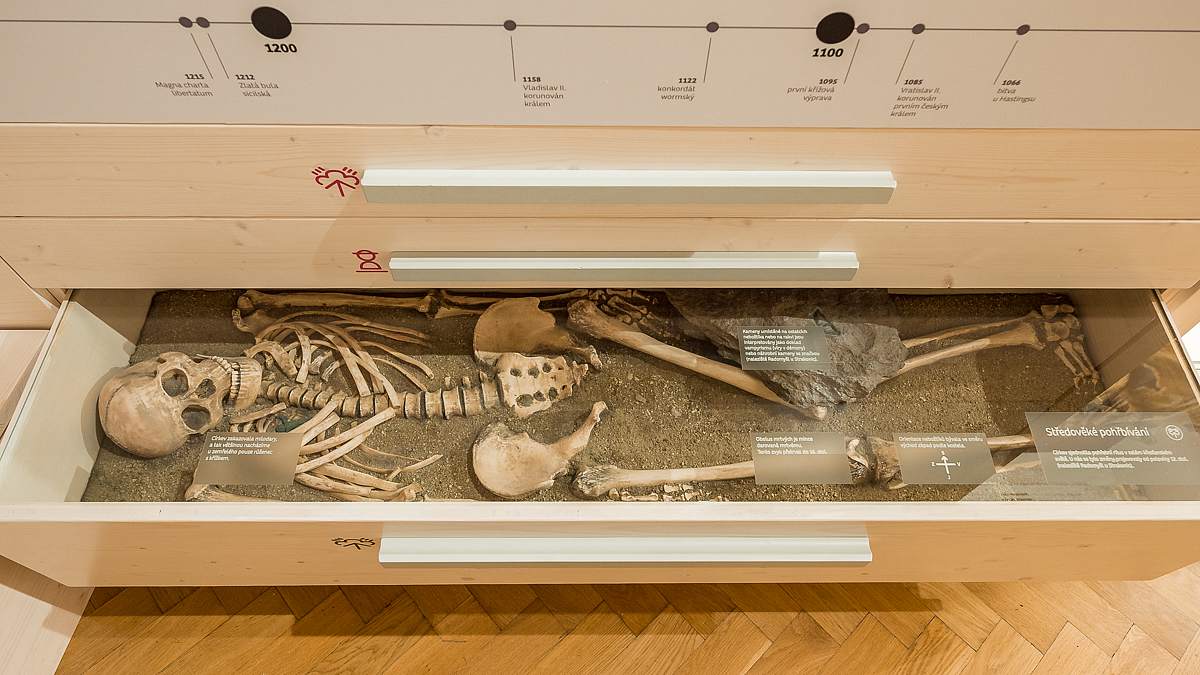CHURCH OF THE ASSUMPTION OF VIRGIN MARY
The Romanesque structural elements of the sacristy in the north of the church indicate that the older building originated as early as in the mid-13th century. Still in the 14th century, the sacristy was followed by a flat-ceiling nave and a narrow chancel. In 1414, the church was damaged by a fire, which gave Zdeněk Lev of Rosental an opportunity to rebuild the entire church.
The previous research was based on a wrongly interpreted inscription on the triumphal arch inside the church, indicating that the construction of a new chancel had started in 1444. As a result of a dendrochronological examination of the roof truss, this date has been moved to 1499. The mistake was caused by confusing the gothic numerals 9 and 4, which used to be written similarly. The chancel with a net vault was constructed on an older building between 1490 and 1499. The flat ceiling in the sacristy was replaced with a cross vault featuring a gable keystone. The coat of arms of the Bavors of Strakonice also remained here, which could indicate the existence of an undiscovered crypt. Construction continued in the years 1505 to 1510, when the older nave was divided by columns into a double-nave and the peripheral masonry was increased and supported by pillars. The cellar vault was built using a progressive technique from the point of view of the architecture of the early 16th century and an analogy of this technique can be found in the Franciscan order in Horažďovice and in the church in Bělčice. Between 1525 and 1530, a depository was added in the north of the nave, where the town documents, worship robes and church utensils would be stored.
The Blatná shrine was richly equipped with precious metal items. One example of these items is the preserved Gothic statue of the assumed Virgin Mary, the so-called ‘Assumpta’, which was made around the year 1490. Around 1515, the statue was replaced with a larger specimen, which today stands in the niche of the main altar. The wide range of potentially valuable equipment would also attract thieves, and in 1518 the church was robbed. Consequently, the sacristy door was covered with sheet metal and equipped with a triple latch lock.
The church and its immediate surroundings served as a place of final rest. Since the 12th century, people would be buried as skeletons and without charitable gifts, except the so-called ‘Charon’s obol’ (a coin) and a rosary with a cross, as evidenced by the extensive burial site with 729 individuals in Radomyšl. The church in Blatná served as a burial site for members of nobility, of which we would like to mention mainly Lev of Rosental, who in 1465 embarked from Blatná to the then-end of the world, leading the messengers of peace sent by the Bohemian king George of Poděbrady to European royal courts. His tombstone lies in the north wall of the chancel, where it was moved at the beginning of the 20th century by local priest Msgr. Jan Pavel Hill.


